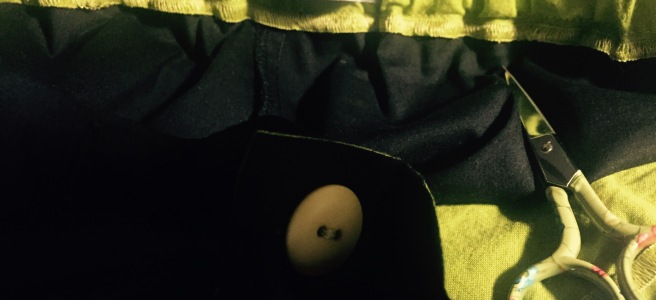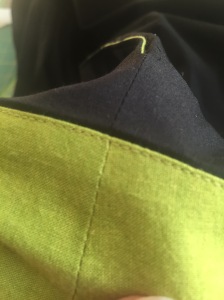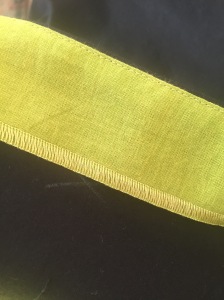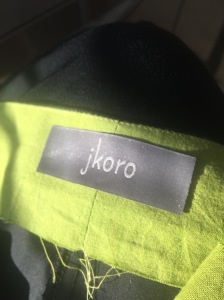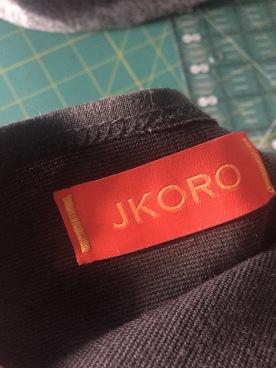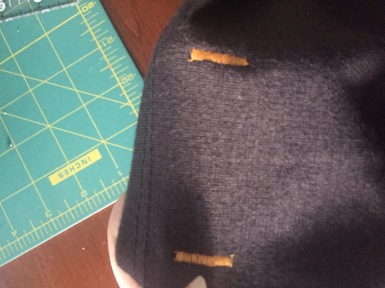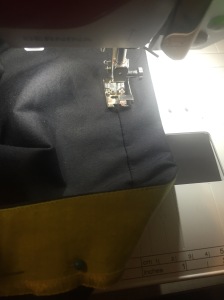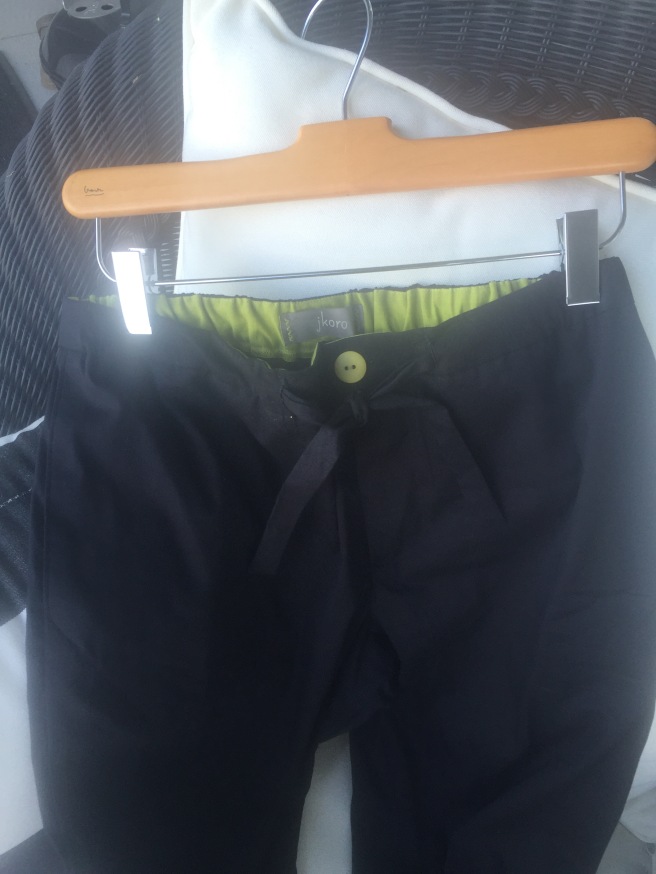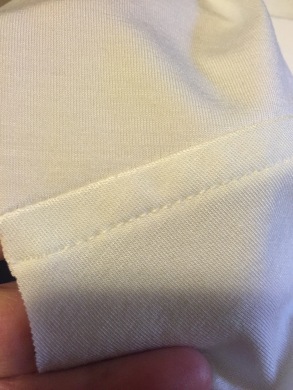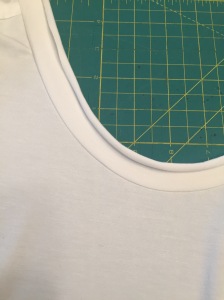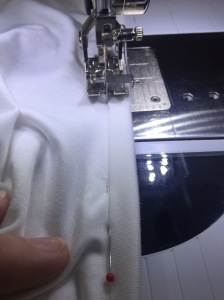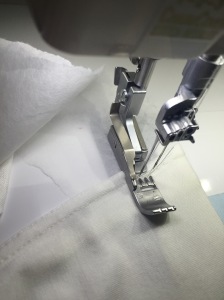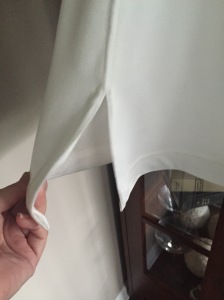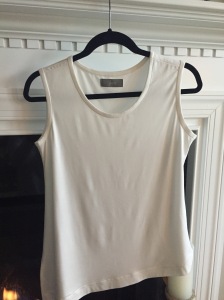In the last couple years I have changed my method for sewing waistbands. The old method has been basically following directions which usually consisted of sewing on the waistband, turning the inside seam allowances under, and top stitching. Sounds easy enough but often to get that topstitching to match perfectly on both sides was an irritating challenge. That is if you like things perfect. I think I am in that category. I have become much more free in my sewing, making my garments with my way of doing things.I don’t worry about the instructions and make it my own. Some people do this naturally. Some people drive themselves crazy by trying to follow someone else’s instructions. I used to always follow the rules. But not anymore.
This is one way to do it.
Sew the waistband lining to the waistband . Trim or grade seam. Edge stitch using #10D foot.
{Wowza, look at those matching seams}
This is where your options begin. For this post, I will be using the serger method.
The fastest way to finish your seams is to use your serger with a 3-thread overlock stitch with a short stitch length. Like a 1 or even less. The width is pretty wide. Maybe a 7.5. There are no rules. Make this your own.
Then you can add your label before you attach the bottom of you want.
For this pair I stitched a tight 3-thread zig zag (#7).
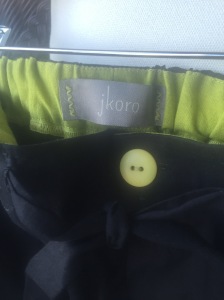
You can also stitch your label on after everything is attached. Sometimes it is fun to use a contrasting thread on the outside like this:
After attaching your label, stitch the short ends of the waistband (leave the lower edge free). Then, on the lower edge, fold it under on each end to where you think is appropriate spot. (Perhaps it could be folded under for the entire width of a front pocket, wherever it looks nice). Pin the entire waistband.
For this pair the pants, the waistband was stitched in the ditch from one end to the other. This pair has a contrasting lining. I put matching thread in the bobbin for the lining.
The inside looks like this (there is elastic inside):
I think they look great. Much better than sloppy topstitching. 😱

